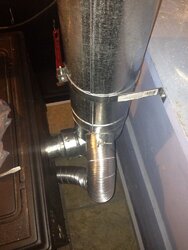Has anyone ever disconnected the OAK from the're stove and seen any differences in Pellet consumption.. less? more/?
or other operation differences? pertaining most to users who might not have really needed an Open air setup due to drafty or not well insulated house?
or other operation differences? pertaining most to users who might not have really needed an Open air setup due to drafty or not well insulated house?


